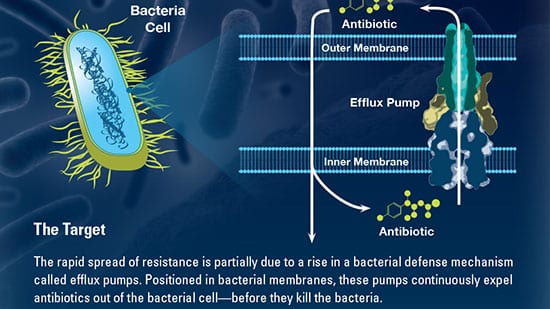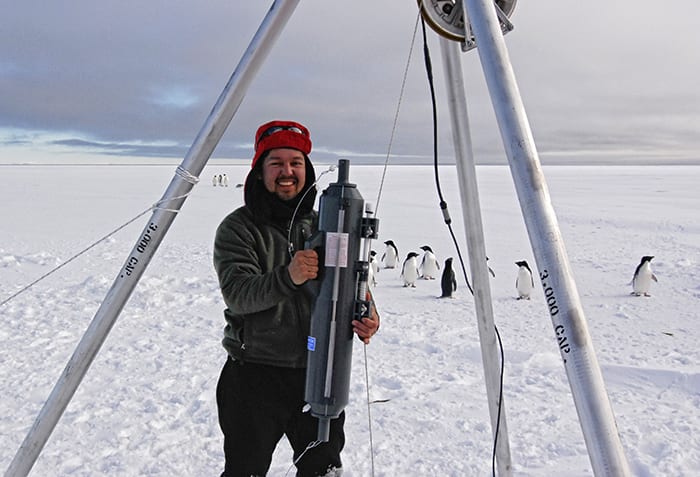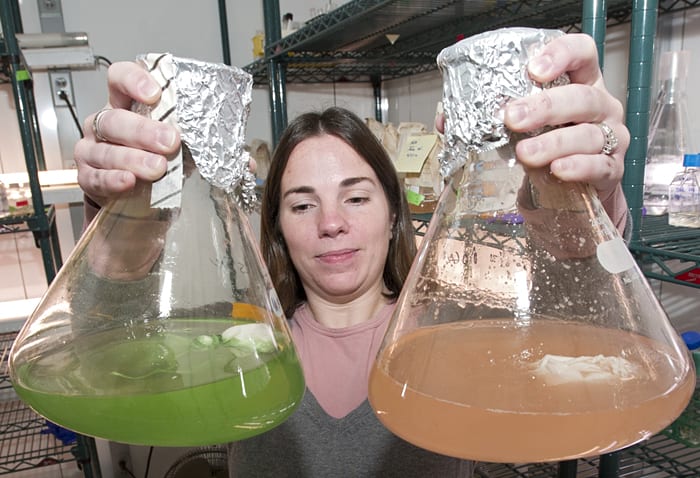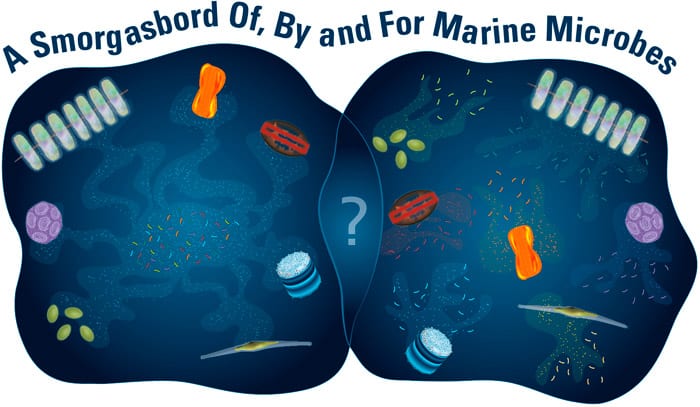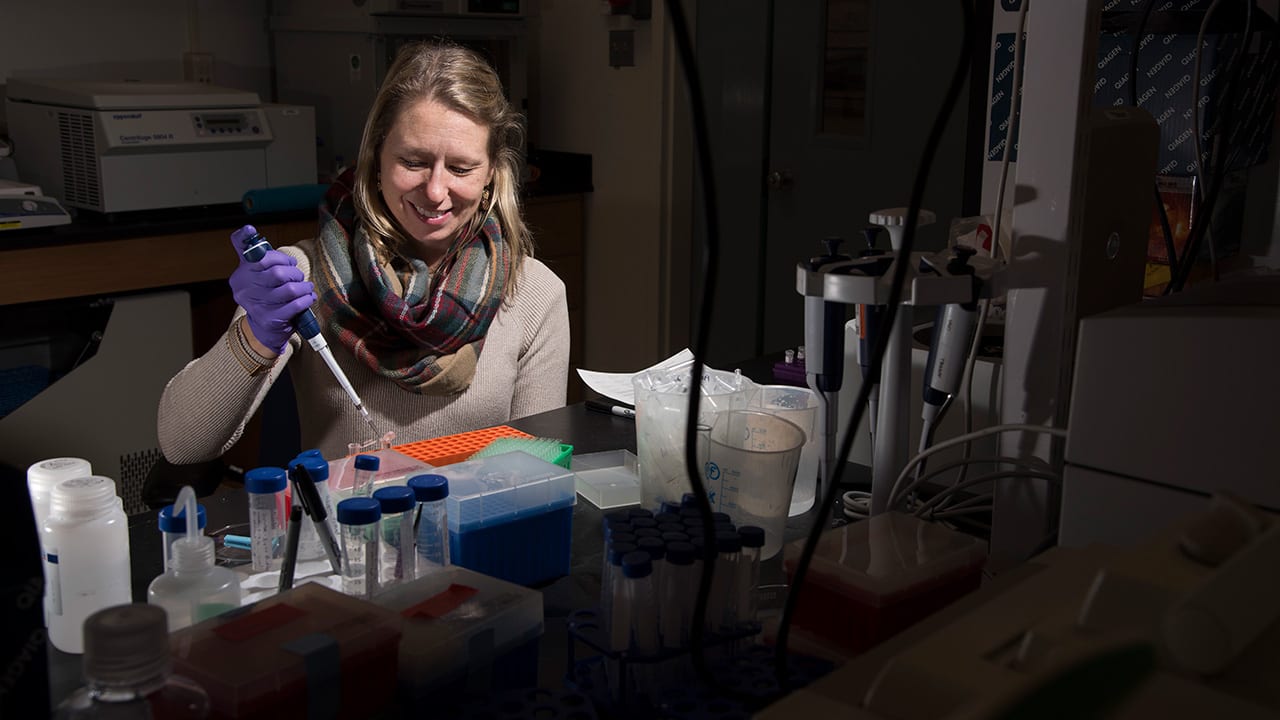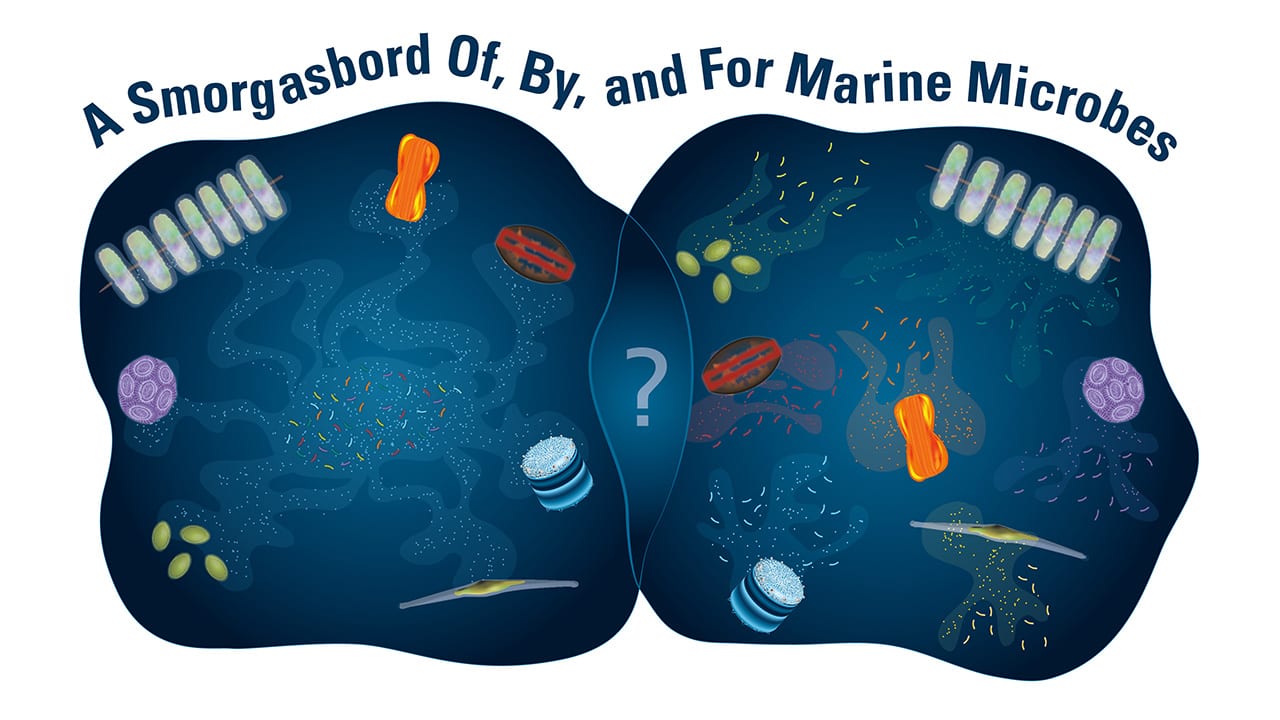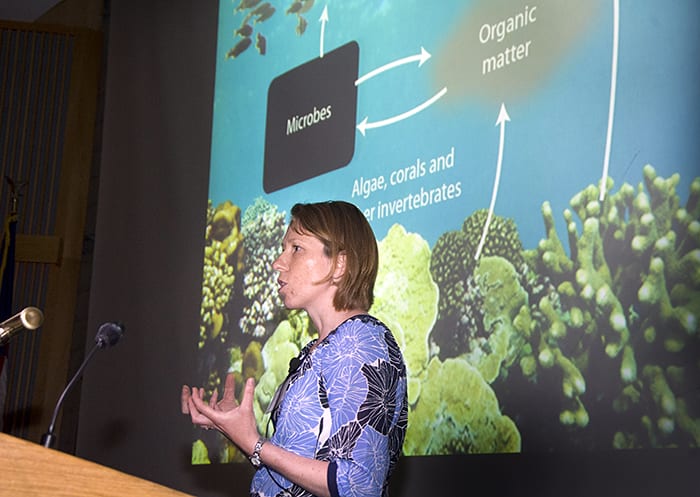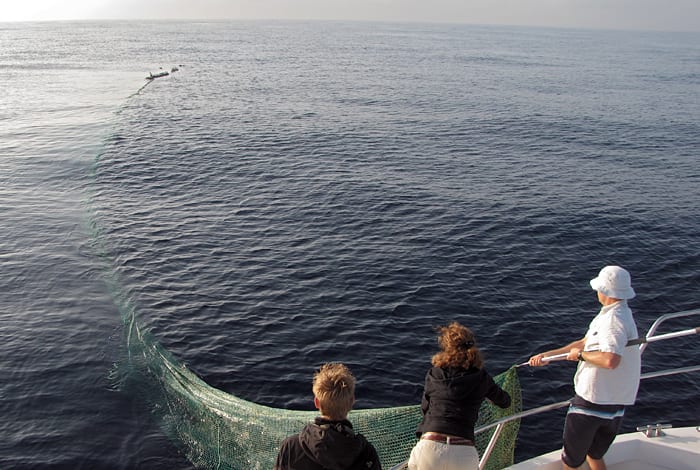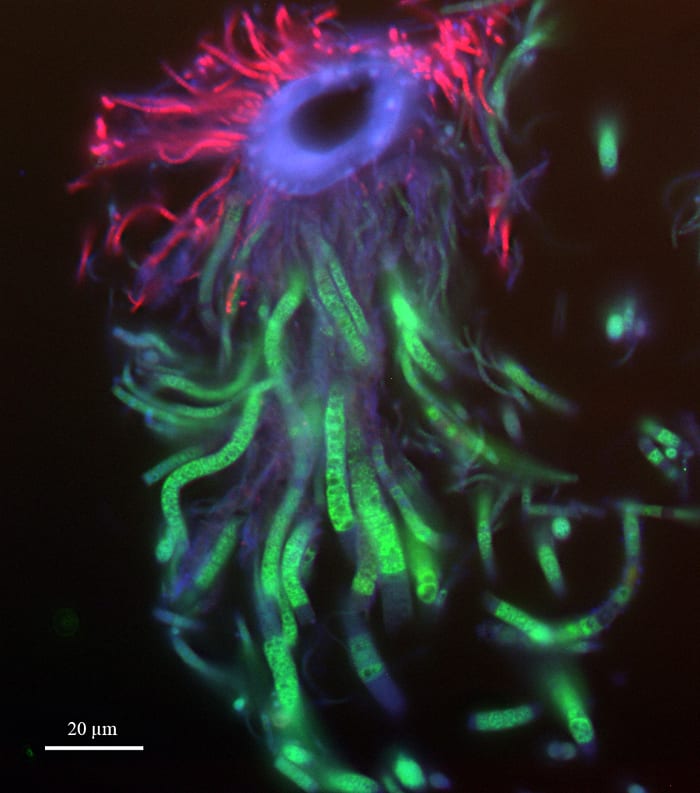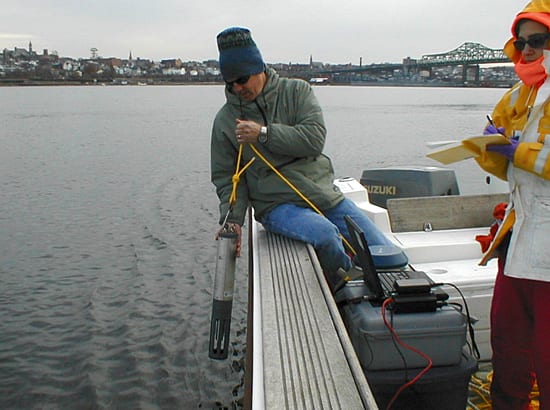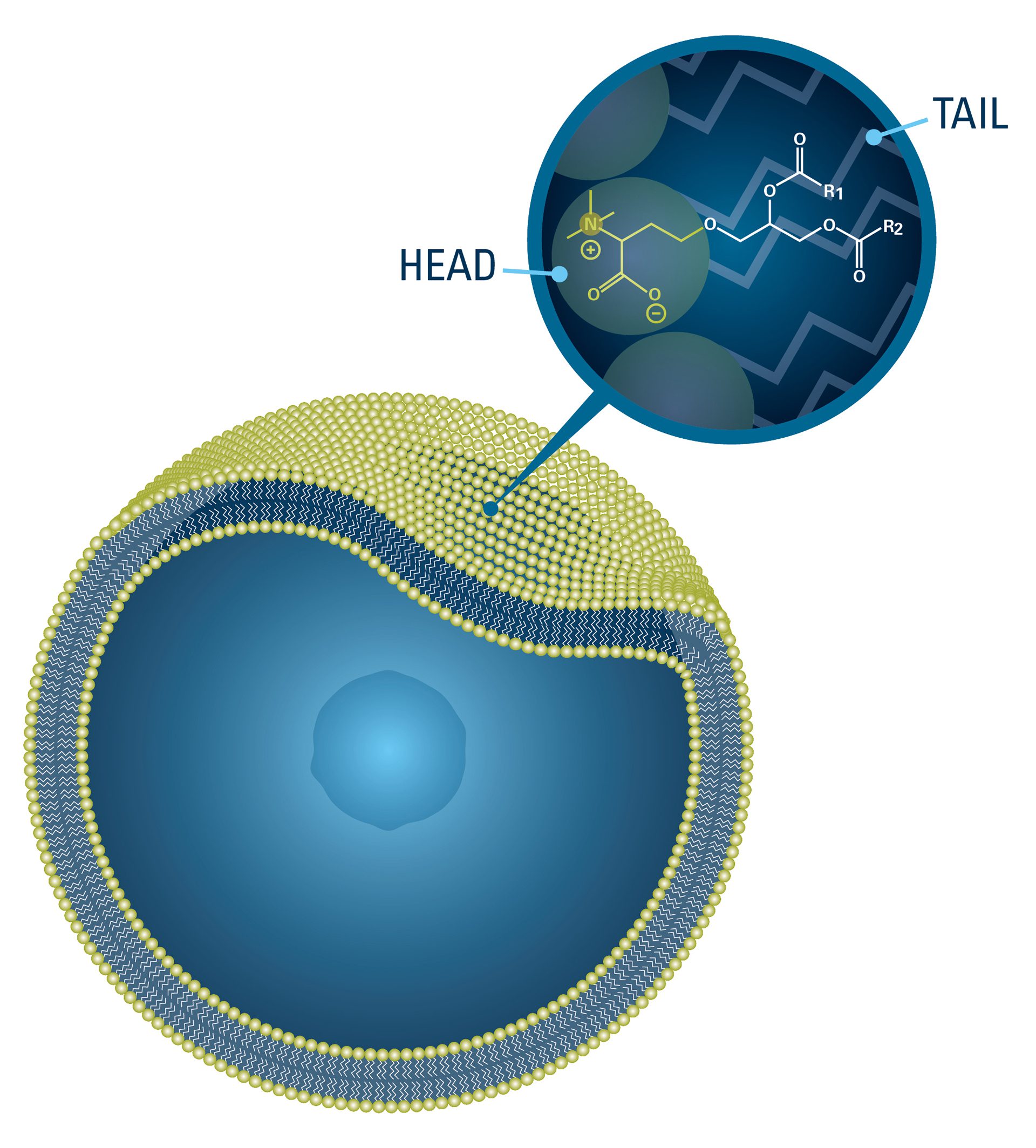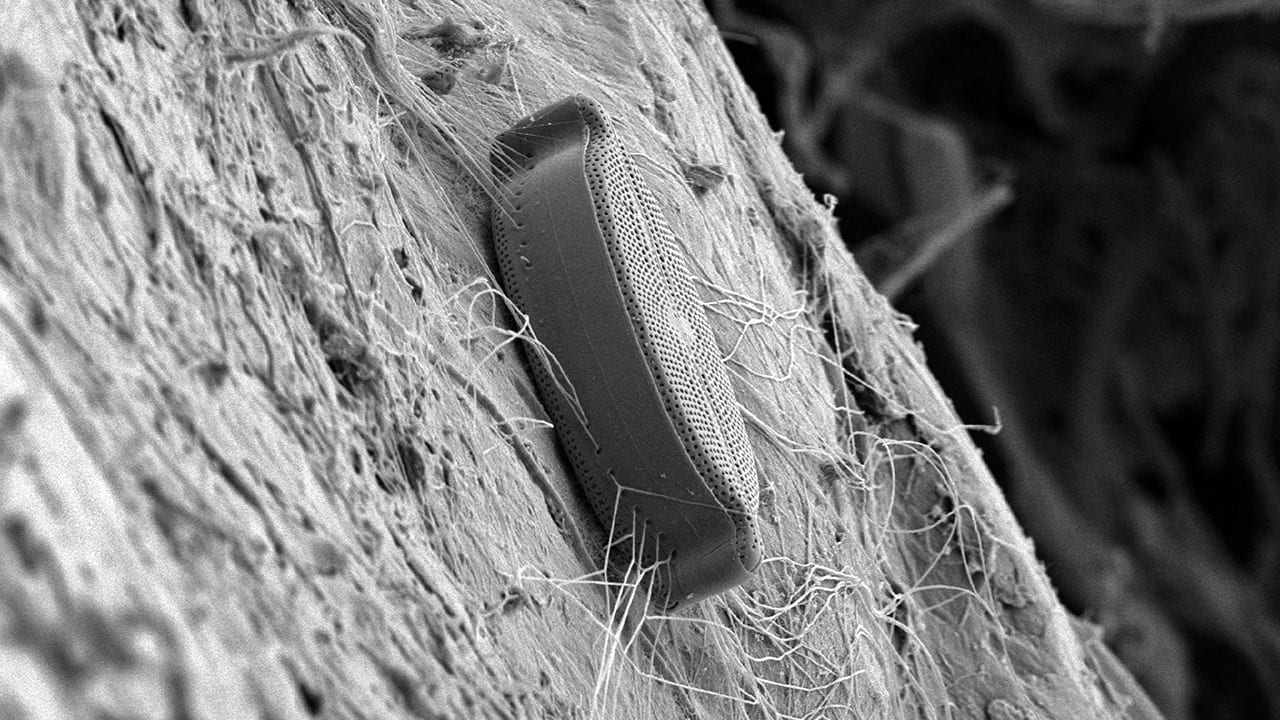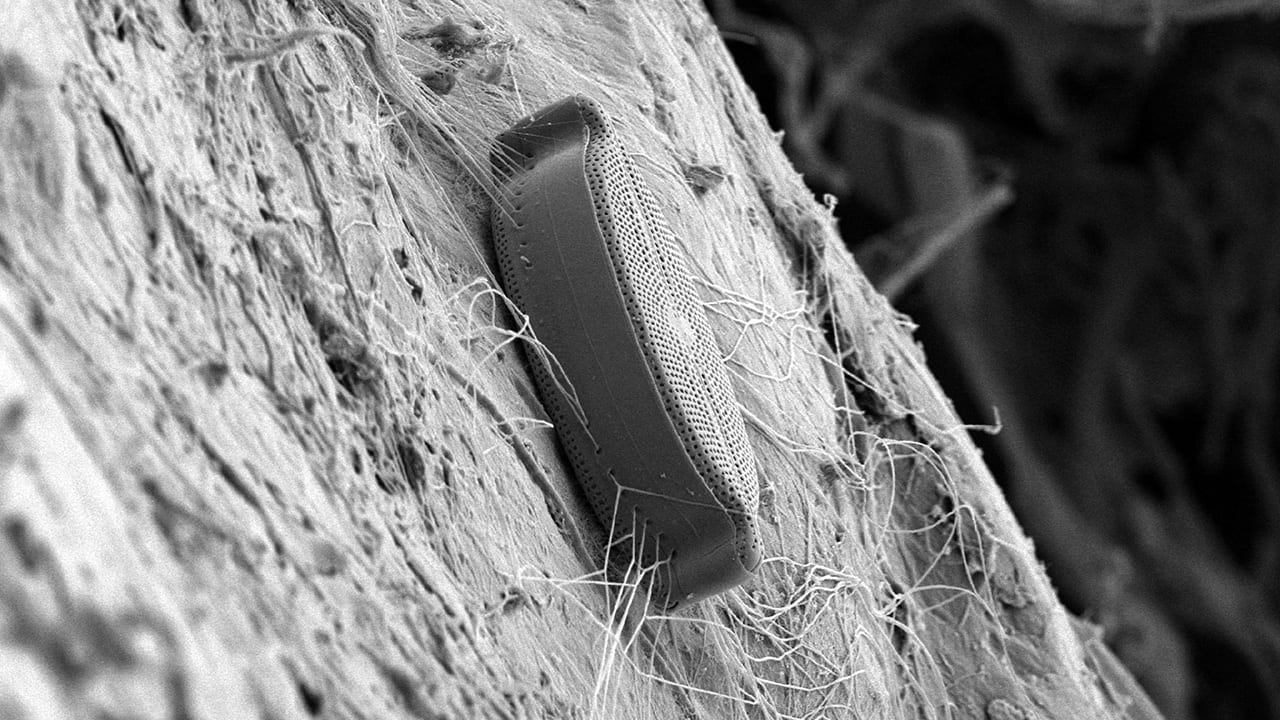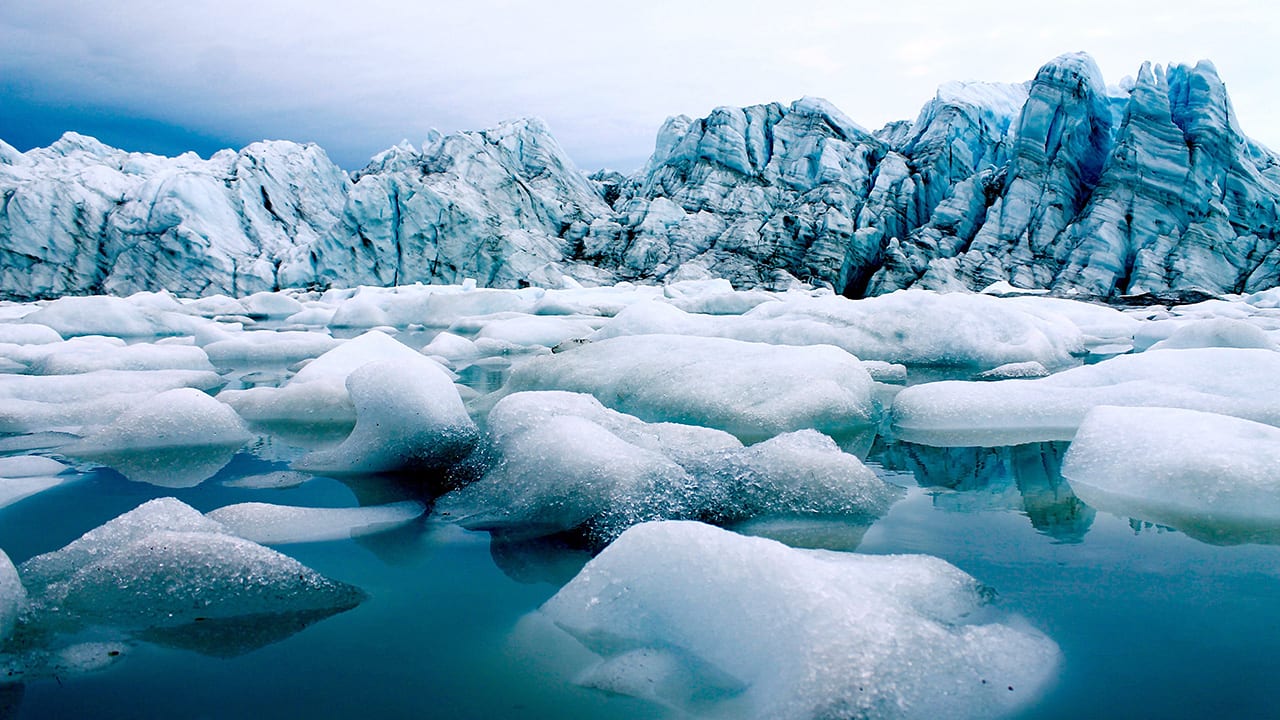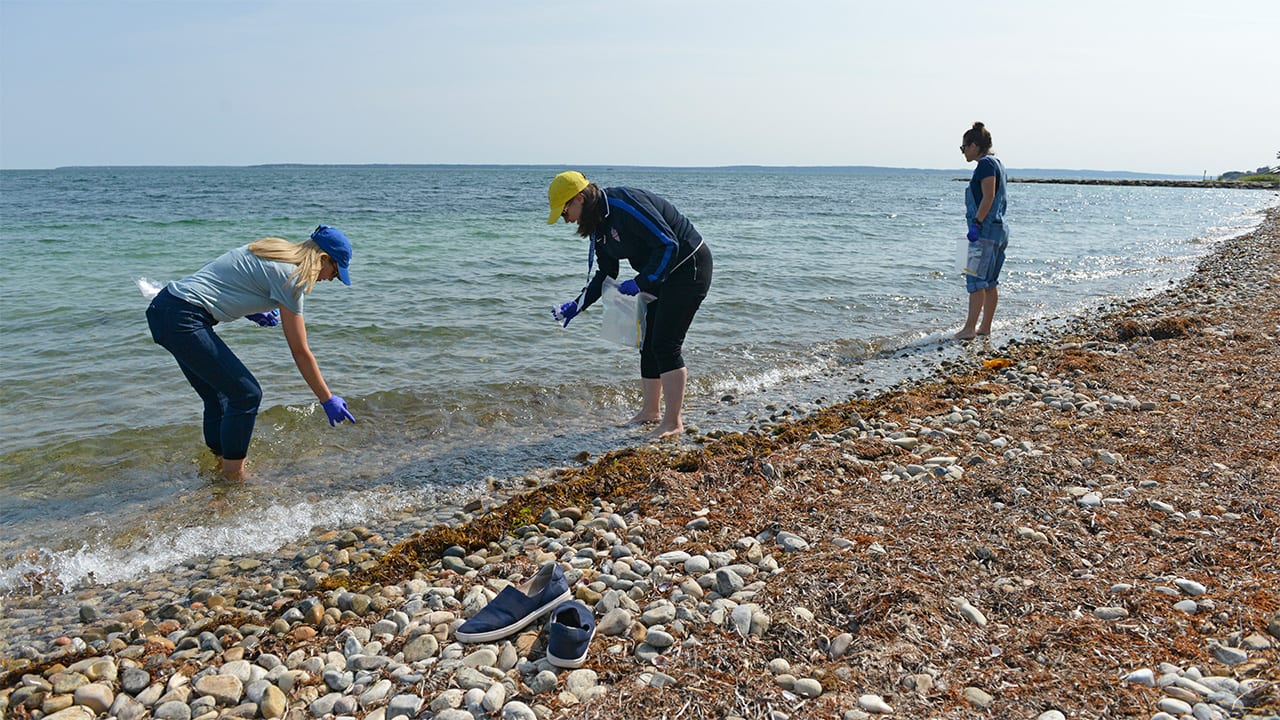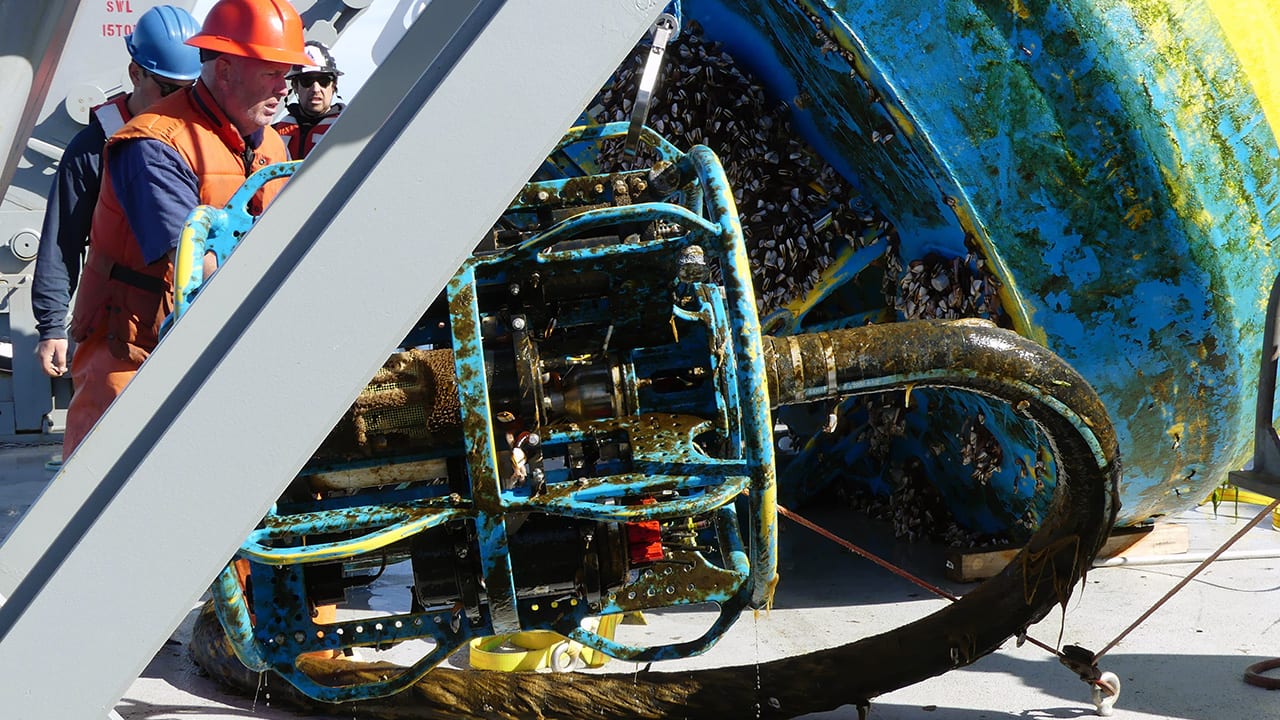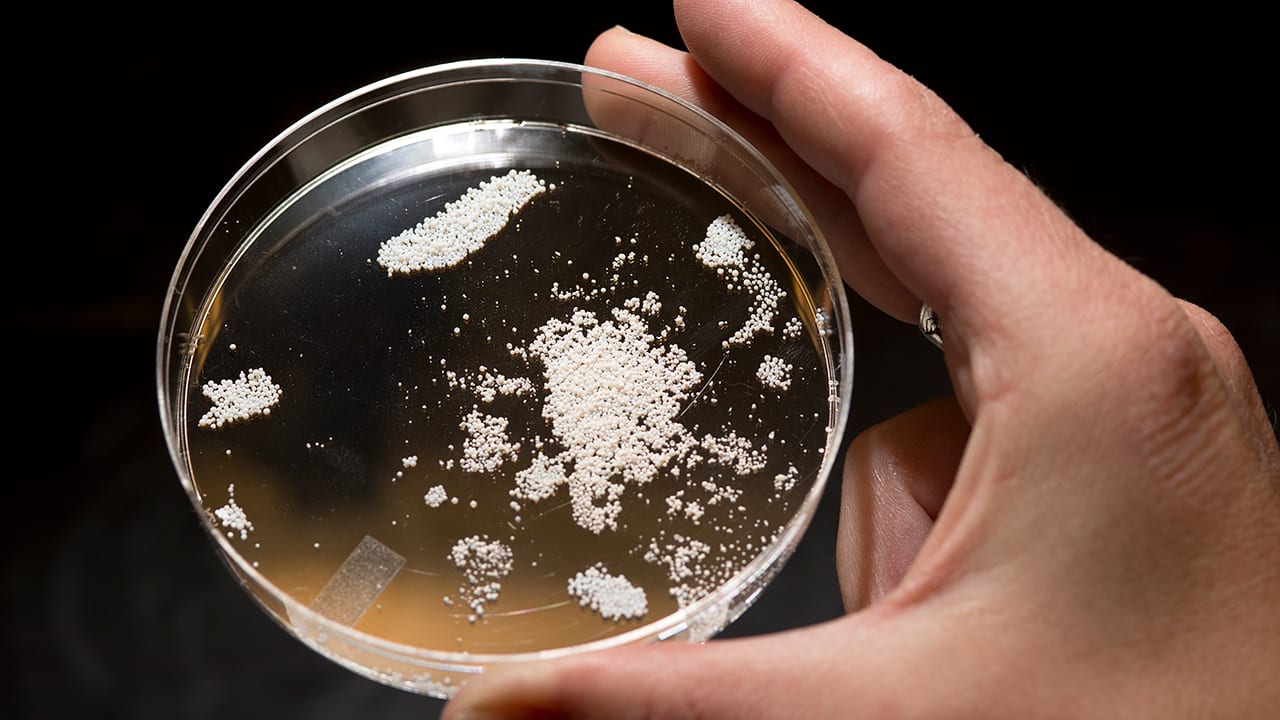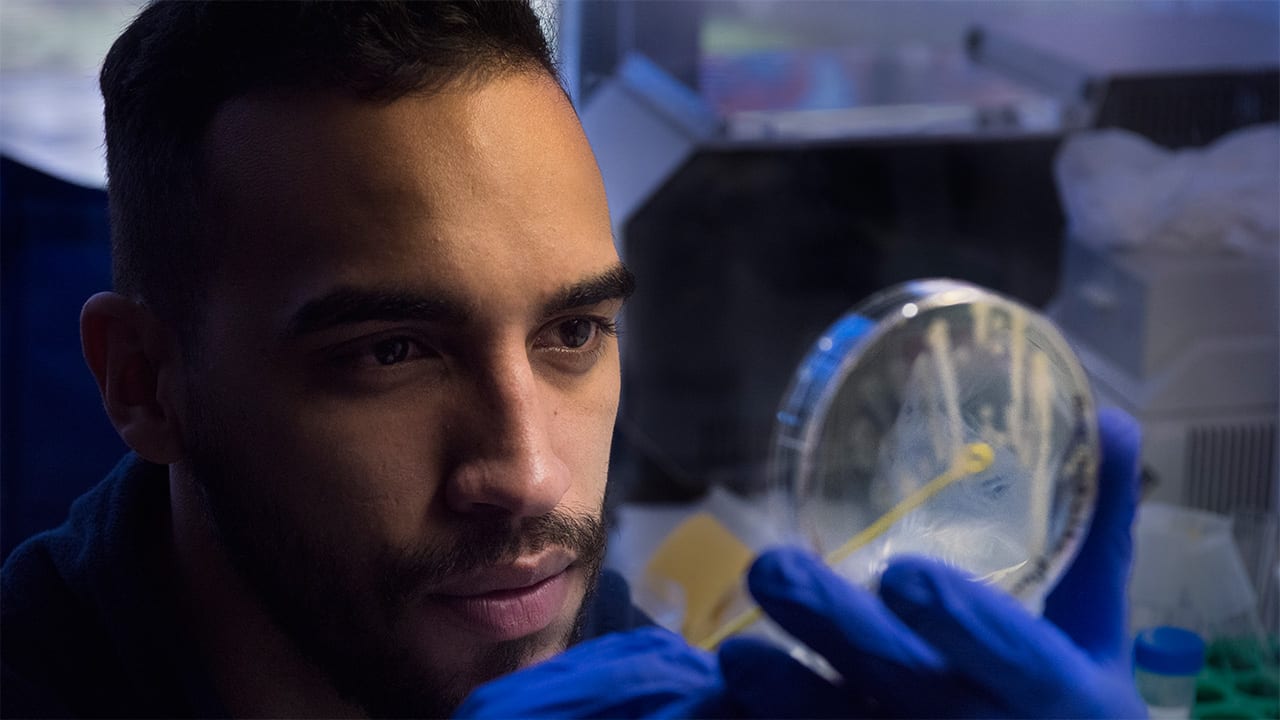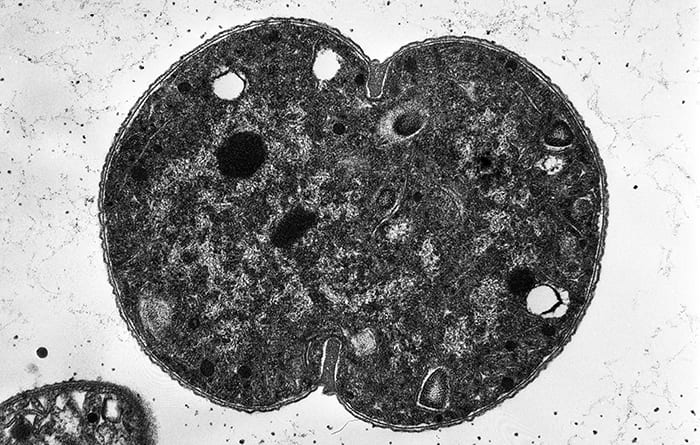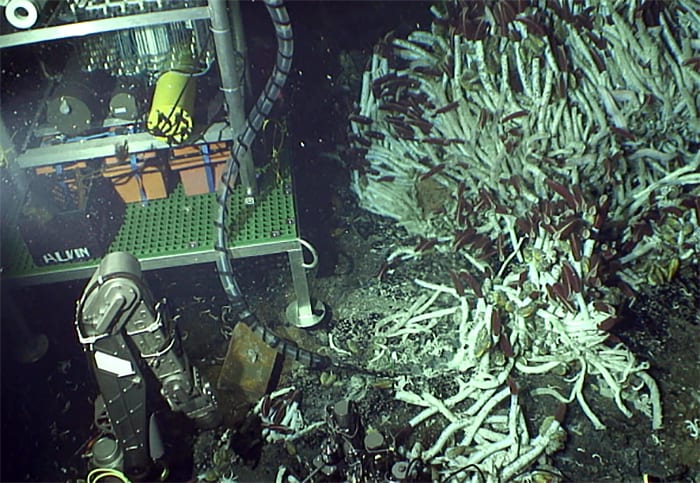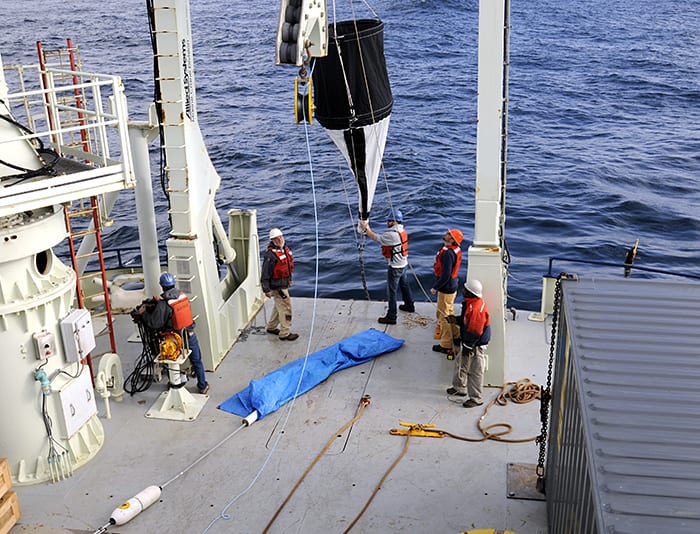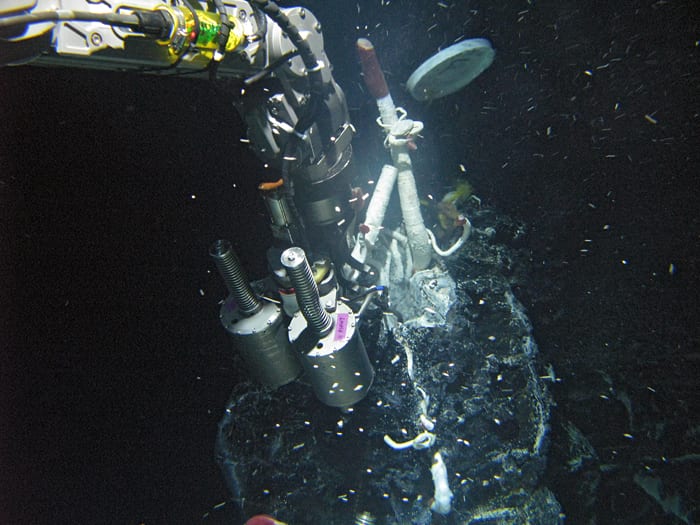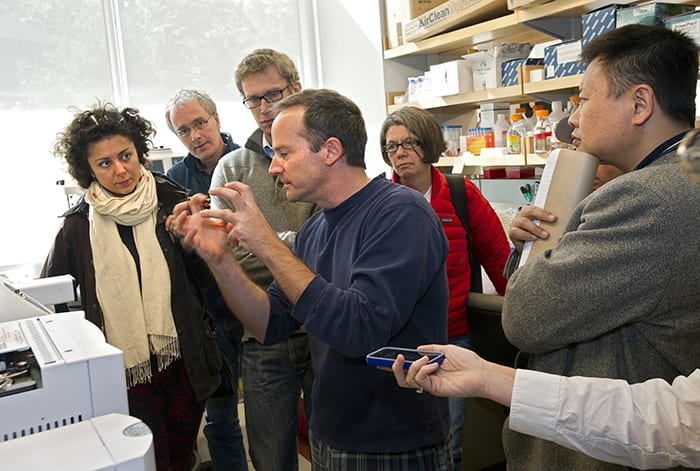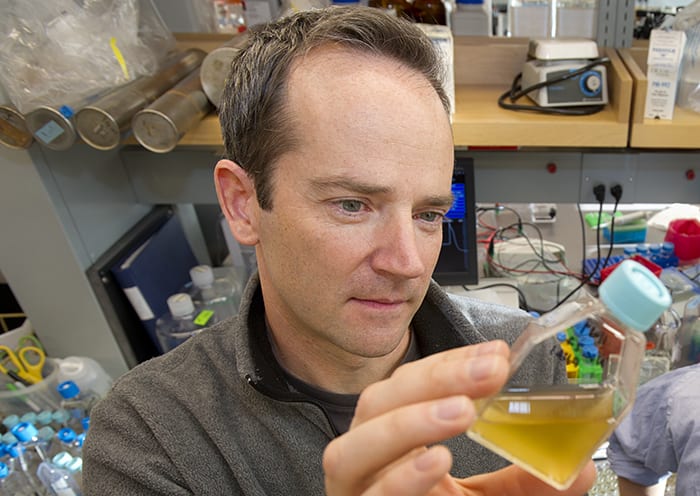Multimedia Items
Mining Marine Microbes for New Drugs
Marine Microbes
WHOI biogeochemist Mak Saito prepares to drill through six feet of ice to take a water sample during 2009 fieldwork in Antarctica that he later analyzed for dissolved metals. Saito…
Read MoreMarine Microbes vs. Cystic Fibrosis
Technician Kristen Rathjen displays flasks of microbial cultures that are part of a project in Tracy Mincer’s lab to generate potential treatments for cystic fibrosis (CF). As they grow, marine…
Read MoreMarine Microbe Relations
By closely examining the stew of organic carbon compounds dissolved in the ocean, scientists are beginning to reveal previously unknown relationships between specific marine microbes, forged by the materials they…
Read MoreFrom Whales to Microbes
WHOI scientist Amy Apprill studies a wide range of marine life—from microorganisms to whales. In recent years, she has studied bacteria living on the skin of humpback whales to gauge…
Read MoreA Million Microbes
A million microbes may live in a single drop of seawater—producing, consuming, and excreting various chemical compounds. Scientists are closely examining this stew of compounds dissolved in the ocean to…
Read MoreMysterious Microbes
WHOI microbiologist Amy Apprill, shown here giving a presentation in 2013, studies the relationships between microorganisms and marine animals. Like humans, marine animals have bacteria living on their skin. While…
Read MoreGiving Marine Life a Ghost of a Chance
During a recent trip to the Mediterranean to study the social ecology of long-finned pilot whales and their reaction to the sound of predators, members of the MED-11 Alboran Sea…
Read MoreColorful Microbes
How do shrimp make a living at hydrothermal vents? They have help from a variety of microbes. This image shows two kinds of bacteria attached to a hair-like structure called…
Read MoreUrban microbes
Research Specialist Mark Dennett of the Woods Hole Oceanographic Institution and Assistant Research Scientist Linda Amaral-Zettler of the Marine Biological Laboratory deploy a sonde (a sensor to collect water column data)…
Read MoreDetail of lipids in cell membranes
The cell membranes of single-celled marine life are mostly made of fatty compounds called lipids. They have a distinctive structure with hydrophilic (water-loving) “heads” and hydrophobic (water-avoiding) “tails” and are…
Read MoreHitching a Ride
An image from a high-powered microscope reveals a microbe that has colonized a microplastic fragment collected in the North Atlantic Ocean. By hitching a ride, such marine microbes entice fish to ingest…
Read MoreLatching On
An image from a high-powered microscope reveals a microbe that has colonized a microplastic fragment collected in the North Atlantic Ocean. Such marine microbes entice fish to ingest microplastics. Scientists…
Read MoreMelt Down
Summertime ice melt along the Greenland Ice Sheet has sped up in recent decades, more fresh water to flow into the surrounding ocean. The fresh water carries nutrients and organic…
Read MoreLab Work
Members of this year’s class of Ocean Science Journalism Fellows spent some time on a beach near WHOI collecting samples to look at the microbiome of the coastal ocean. The number and…
Read MoreFoul-bio
Jim Ryder, a senior engineering assistant at WHOI, inspects components of a mooring and buoy that have been biofouled—that is, coated with algae, barnacles, or other gripping organisms. Biofouling is…
Read MoreMedicine from the Sea
These resin beads are part of a process that WHOI scientists have used to search for potential chemical compounds made by microbes in the ocean, which could help combat disease.…
Read MoreTaking a Closer Look
WHOI research assistant Luis Valentin-Alvarado examines a petri dish for colonies of E. coli. The bacteria have been made to produce large quantities of peptide standards—short amino acid chains—from the…
Read MoreWaste Not
The bacterium, Crocosphaera watsonii (pictured), is one of the few marine microbes that can convert nitrogen gas into organic nitrogen, which acts as fertilizer to stimulate plant growth in the…
Read MoreA Device Named SID
In November 2014, researchers used Alvin to position and test a deep-sea instrument called Vent-SID for the first time at a hydrothermal vent site on the East Pacific Rise. It was the latest…
Read MoreCatcher in the Sea
Scientists and crew aboard the research vessel Knorr deployed a sediment net trap on a 2012 cruise in the North Atlantic to collect particles sinking from the sea surface. The…
Read MoreSpa Day
Scientists use HOV Alvin’s manipulator arm to collect fluid from a hydrothermal vent about 2,500 meters (8,200 feet) underwater at a site named CrabSpa because the water temperature from the…
Read MoreEducating Journalists
Every year, WHOI scientists host a daylong visit by members of the Knight Science Journalism Program at MIT, which offers full-year fellowships to journalists to increase their understanding of science,…
Read MoreBacterial Behavior
Microbial ecologist Tracy Mincer assesses a culture of bacteria in his lab at WHOI. Mincer studies the chemical compounds marine microbes produce to communicate with each other, defend themselves, and…
Read More
